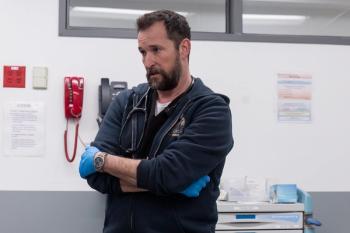
CMS approves 2024 inpatient payment rates, and hospitals are ‘deeply concerned’
Organizations representing hospitals say they fall short and don’t recognize their higher costs. And there is anger over planned cuts in aid to safety-net hospitals.
To those outside the hospital industry, the federal government’s plan to raise payments for inpatient care in 2024 by 3.1% probably doesn’t sound terrible.
But groups representing hospitals say the government’s plans don’t match the higher costs health systems have been facing for years. Critics also assailed payment plans for safety-net hospitals and long-term care hospitals.
The Centers for Medicare and Medicaid Services released its
Long-term care hospitals won’t see much additional aid. The Long-Term Care Hospital Prospective Payment System (PPS) calls for a 0.2% increase in payments, or a total of $6 million in 2024.
Ashley Thompson, senior vice president of public policy analysis and development for the American Hospital Association, said health systems are disappointed with the final rule.
“The AHA is deeply concerned with CMS’ woefully inadequate inpatient and long-term care hospital payment updates,” Thompson said in a statement. “The agency continues to finalize rate increases that are not commensurate with the near decades-high inflation and increased costs for labor, equipment, drugs and supplies that hospitals across the country are experiencing.”
Hospital organizations say they are angry over the plans to cut disproportionate share hospital (DSH) funding, which supports safety-net hospitals with a high percentage of patients on Medicaid. CMS is planning to reduce DSH aid to safety-net hospitals by $957 million.
Bruce Siegel, president and CEO of America’s Essential Hospitals, said in a statement that the CMS’ payment plans “will undermine the nation’s essential hospitals and safety net care for low-income and marginalized patients.”
The CMS said the reduction in DSH payments is based on an anticipated drop in uninsured Americans, but Thompson says that analysis is confounding.
She pointed to the fact that
“This is an inexplicable assumption given that the Department of Health and Human Services itself estimates that 15 million individuals will leave Medicaid once the continuous enrollment provision comes to an end, only one-third of whom will be eligible for Marketplace subsidies,” Thompson said in her statement.
Premier Inc., which buys supplies and provides other services for hospitals, said the CMS plans don’t account for rising healthcare costs.
“Premier is deeply disappointed in the hospital payment update finalized by the Centers for Medicare & Medicaid Services,” Soumi Saha, Premier’s senior vice president of government affairs said in a statement.
“This inadequate update ensures that hospitals will instead focus on how they are going to keep their doors open,” Saha said. “The chasm between a 3.1 percent payment update and reality, coupled with uncomfortably high inflation, is unsustainable and threatens the viability of the American healthcare system.”
Hospitals said they did appreciate CMS expressing interest in offering additional support for hospitals that serve a large number of patients with lower incomes. Advocates for safety net hospitals have been pushing for
The payment proposals come as many hospitals continue to struggle financially.
While many health systems are seeing more stable operating margins than in 2022, some hospitals continue to face a tough road, and
As the Biden administration aims to improve health equity, the CMS said it is planning to offer more support for hospitals delivering quality care to vulnerable groups.
“As part of CMS’ health equity goals, we are rewarding hospitals that deliver high-quality care to underserved populations and, for the first time, also recognizing the higher costs that hospitals incur when treating people experiencing homelessness,” CMS Administrator
The agency said it also plans to include a new safety measure evaluating hospitals on sepsis care.
The AHA said it welcomes the CMS’ plans to offer more support for graduate medical training in rural hospitals.
Still, hospital leaders continue to express the sentiment that the government isn’t doing enough to support hospitals and health systems, even as some are having difficulty staying afloat.
Rick Pollack, president and CEO of the American Hospital Association, said the government needs to step up. The cost of care for hospitals has risen 18% over the past three years, while Medicare rates have risen less than half that amount, Pollack said at the
“Our government needs to change how it updates these rates,” he said. “Right now, the math is flat out wrong.”




























































































